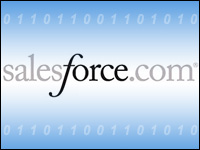
Every disruptive innovation requires a minimum of two parties to play the game. There has to be a disruptor — someone who does the disrupting — as well as one or more disruptees — the party or parties being disrupted. Identifying either party is difficult, but for different reasons.
The disruptor is usually best identified in hindsight. It is the nature of markets that at any one time there are many competitors who are either the market share leaders or close to the top, or they are challengers. Since most challengers fail for different reasons, it is hard to identify a disruptor until the disruption process is fairly well under way.
Meeting the Challenge
Disruptees are a little different. Since disruptees are the market leaders, they are easy to spot. However, if we all reacted every time a challenger made a product that claimed to be better, we would have a lot of false positives, to say the least. Here too, it is in retrospect that we can best see that a company should have reacted differently to a challenger because that challenger in particular eventually stole the disruptee’s lunch.
Last week in New York, with this complex dance as a backdrop, two events collided offering up more drama than usually accompanies the ebb and flow of the software market. Marc Benioff, CEO of Salesforce.com was in Manhattan to address a lunch meeting of customers, press, analysts and investors at which he unveiled his company’s new salient into the financial services market. By an eerie coincidence, the lunch took place in the middle of the stock market meltdown.
The worst stock market sell-off in five years was a random event. News reports said — and this is the interesting part — the computer systems that normally report on the market averages were swamped, overwhelmed by the volume of transactions so that a 200-point drop that took a longer time to actually unfold was reported as a more precipitous dive.
You might ask what difference it makes whether a drop like that happens in real time or in something close to it, but of course it does matter. It matters for all the panicky people trying to make decisions about what to sell and what to hold on to. A rapid drop like that is the kind of thing that people used to jump out of windows over.
A Wild Ride
For all of this decade Benioff and his company have enjoyed a wild ride that started out when he decided to disrupt the enterprise software market with a CRM offering delivered on-demand. The story is well known and needs no long recitation here other than to point out that the disruptees were all of the enterprise software companies that sold through a conventional license mechanism and delivered products to be run on their customers’ computers.
Benioff made Siebel Systems the poster child of the old guard that also included PeopleSoft, Oracle, JD Edwards, SAP and others. What’s important to note is that everyone, not just Siebel, was true to form for disruptees, which is to say they did little to react to the challenge until it was too late and the new model had proven itself.
Last week in New York, there was what you can only call a dramatic coincidental pairing of old guard and new on the day the stock market sank. Computer systems tend to show their age during big sell-offs as systems that were built to handle certain loads fail when their loads are dramatically exceeded.
If I recall correctly, there was a similar computer problem during the sell-off at the end of the 1980s. The New York Stock Exchange went on a shopping spree after that to beef up its computer infrastructure and located some of its datacenters in other locations, but recent events show that it is a never-ending struggle to keep up with increasing volumes.
Targeting Bloomberg?
Salesforce.com’s wealth management solution probably would not have had much impact on the events of last week. It is a solution designed for traders, but it is not positioned as a back office system which is where it appears the problem was. Nevertheless, there are stories circulating that Salesforce.com’s aim is to replace the Bloomberg terminals that have become a fixture on the desks of financial advisors.
At this juncture we have disruptor, disruptee and a tipping point event. If the problems surfaced during the sell-off cause the financial services industry to perform one of its periodic reassessments of its computer systems, then Salesforce.com might be very well positioned.
However, there are numerous questions that need to be asked and answered by everyone involved in managing data at the exchanges before any changes can be instituted. Most importantly, managers at the leading bourses need to ask whether their de facto in-house software as a service can compete with a commercial service.
At the same time, Salesforce.com and its brethren need to answer similar questions about their own capacities. If the answers to all the questions are affirmative, then this might turn out to be the greatest inflection point yet for software delivered as a service.
Denis Pombriant runs the Beagle Research Group, a CRM market research firm and consultancy. Pombriant’s research concentrates on evolving product ideas and emerging companies in the sales, marketing and call center disciplines. His research is freely distributed through a blog and Web site. He is working on a book and can be reached at [email protected].
























































Social CRM
See all Social CRM